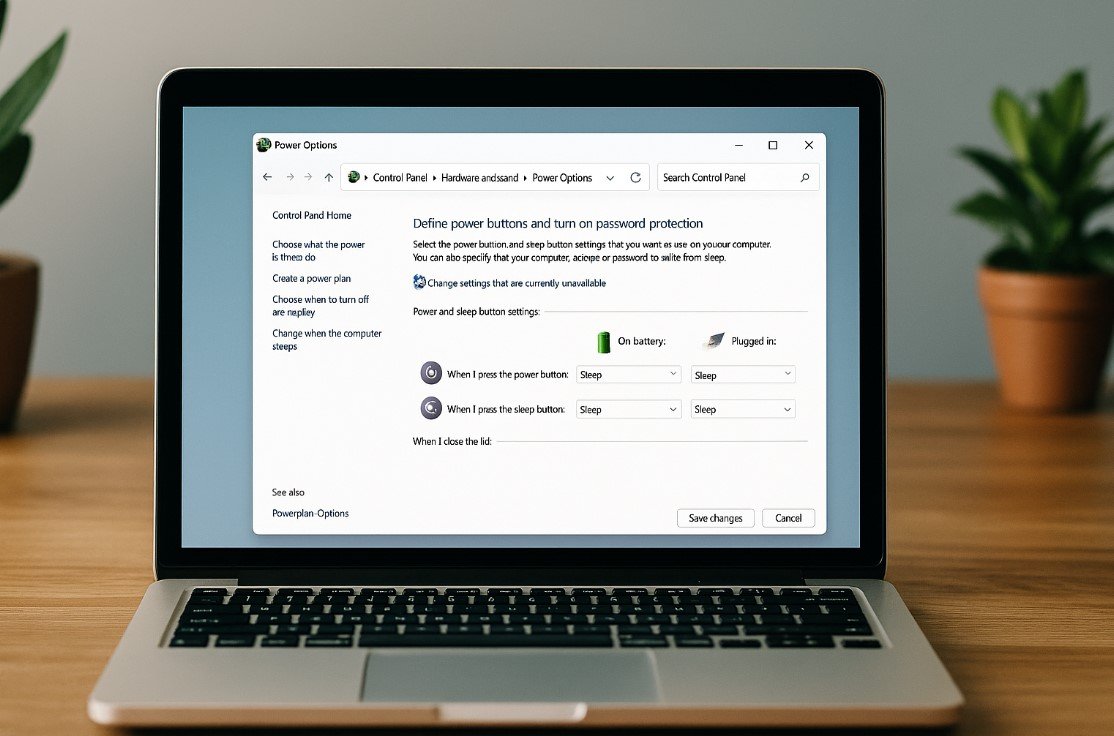Tech
Laptop Lid Closed Settings: Step-by-Step Guide

Laptops are designed to automatically perform certain actions when you close the lid, such as going to sleep or hibernating. While this is useful for saving power, there are times when you might want to change these settings. For example, you may want your laptop to stay on when connected to an external monitor or when performing background tasks. In this guide, we will explain step by step how to manage the laptop lid closed settings on Windows. The instructions are simple and suitable for new users who are not familiar with these options.
Why Adjust the Laptop Lid Closed Settings?
By default, most laptops go into sleep mode when you close the lid. This prevents battery drain but may interrupt downloads, updates, or other tasks. Adjusting these settings allows you to keep the laptop running or configure different behaviours when using battery or power. Understanding the available options ensures you can customise the laptop to fit your needs, whether you are using it as a desktop replacement or while travelling.
Step 1: Open the Control Panel
The first step to changing closed laptop lid settings is opening the Control Panel on Windows. You can do this by pressing the Windows key on your keyboard and typing “Control Panel” into the search bar. Select the Control Panel from the search results. This area contains all the system settings for power, hardware, and other configurations.

Step 2: Go to Power Options
Once inside the Control Panel, find the section called “Hardware and Sound.” Under this category, you will see “Power Options.” Click on Power Options to view the available power plans. These plans define how your laptop behaves with power usage and sleep mode. On this page, you will also find links to configure what happens when the lid is closed.

Step 3: Access the Lid Close Settings
On the left-hand side of the Power Options window, you will see a menu. Click on “Choose what closing the lid does.” This will take you to a page where you can directly adjust the lid closed setting preferences. You will see two columns: one for “On battery” and another for “Plugged in.” This means you can define separate actions depending on whether the laptop is running on battery power or is connected to the charger.

Step 4: Select the Action
Under the “When I close the lid” section, you will see dropdown menus next to “On battery” and “Plugged in.” These menus give you several laptop lid close options, such as:
- Do nothing: The laptop remains powered on even when the lid is closed.
- Sleep: The laptop enters sleep mode, which saves power while allowing quick resume.
- Hibernate: The laptop saves the current session to the hard drive and powers down.
- Shut down: The laptop powers off completely.

Select the action that fits your requirements for each power state. For example, you can set it to “Do nothing” when plugged in, so the laptop stays active when connected to an external display, and “Sleep” when on battery to save energy.
Step 5: Save Changes
After choosing your preferred actions, scroll down to the bottom of the page and click on the “Save changes” button. This will apply your new close lid settings. If you do not click save, the laptop will continue to use the previous default configuration.
Step 6: Test the Settings
Once you have saved the changes, you can test them by closing your laptop lid. Depending on your choice, the laptop will either remain active, go to sleep, or shut down. It is a good idea to test both the “On battery” and “Plugged in” scenarios to confirm that everything is working as intended. If you are using an external monitor, you should see the display continue without interruption when the lid is closed, provided you selected “Do nothing.”
Additional Power Settings
In the Power Options window, you can also adjust advanced settings for better performance and battery management. Click on “Change plan settings” next to your current power plan, then select “Change advanced power settings.”

Here, you will find a detailed list of options, such as display timeouts, processor performance, and wireless adapter settings. While these are not directly related to the lid settings, they can help you customise your laptop’s overall power behaviour.
Considerations for Different Users
If you often connect your laptop to a docking station or use it with an external keyboard and monitor, setting the lid action to “Do nothing” can make your setup more convenient. On the other hand, if you are concerned about battery life, setting it to sleep or hibernate when the lid is closed is more energy-efficient. Always remember that if you set it to “Do nothing” while on battery, the laptop will continue to consume power even when closed.
Mac Users and Lid Settings
While this guide focuses on Windows, Mac laptops handle lid settings differently. On macOS, the laptop generally goes into sleep mode when the lid is closed, and there are fewer built-in options to change this behaviour. However, third-party tools or using an external monitor setup can help achieve similar results. Windows users have more direct control through the built-in Control Panel.
Troubleshooting Lid Settings
In some cases, the changes you make might not work as expected. This can happen if there is a conflict with system updates or third-party software. To troubleshoot, revisit the Power Options and confirm that the changes have been saved. You can also reset your power plans to default by clicking “Restore default settings for this plan.” Updating your laptop drivers, especially the power management driver, can also help resolve issues.
Final Thoughts
Managing laptop lid closed settings gives you greater control over your device. Whether you want the laptop to remain on for presentations or downloads, or prefer it to sleep for power saving, these settings allow for full customisation. By following the steps outlined above, even new users can easily make changes without confusion. Remember to test your settings and adjust them as needed based on how you use your laptop.
Check out more laptop settings:
-

 Lifestyle2 months ago
Lifestyle2 months agoKehinde Alli: Empowering Youth Through the Alli Foundation
-

 News2 months ago
News2 months agoIryna Zarutska: Refugee Journey Cut Short by Violence
-

 Business2 months ago
Business2 months agoTech Capital One: Careers, Jobs, and Opportunities
-

 Digital Marketing2 months ago
Digital Marketing2 months agoHow Embedded Payments Are Turning Apps Into Revenue Engines






